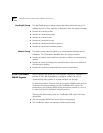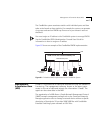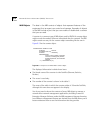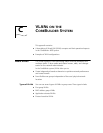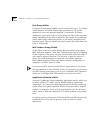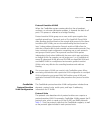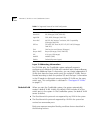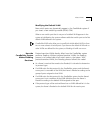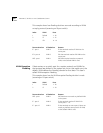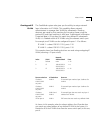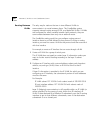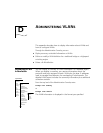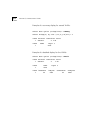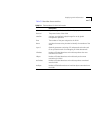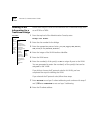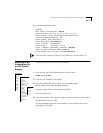
C-6 APPENDIX C: VLANS ON THE COREBUILDER SYSTEM
This example shows how flooding decisions are made according to VLANs
set up by protocol (assuming an 18-port switch):
VLAN Exception
Flooding
If data arrives on a switch port for a certain protocol and VLANs for
that protocol are defined in the system but not on that switch port, the
default VLAN defines the flooding domain for that data. This case is
called VLAN exception flooding.
This example shows how the VLAN exception flooding decision is made
(assuming an 18-port switch):
Index VLAN Ports
1 Default 1 - 18
2 IP 1 - 12
3 IPX 11 - 16
Data received on Is flooded on Because
IP - port 1 VLAN 2 IP data received matches IP VLAN on the
source port.
IPX - port 11 VLAN 3 IPX data received matches IPX VLAN on the
source port.
XNS - port 1 VLAN 1 XNS data received matches no protocol
VLAN, so the Default VLAN is used.
Index VLAN Ports
1 Default 1 - 18
2 IP 1 - 10
Data received on Is flooded on Because
XNS - port 1 VLAN 1 XNS data does not match any defined VLAN
in the system.
IP - port 2 VLAN 2 IP data received matches IP VLAN 2 for
source ports 1 - 10.
IP - port 12 VLAN 1 IP data received on source port 12 does not
match any defined source port for IP VLAN,
so the Default VLAN is used.



